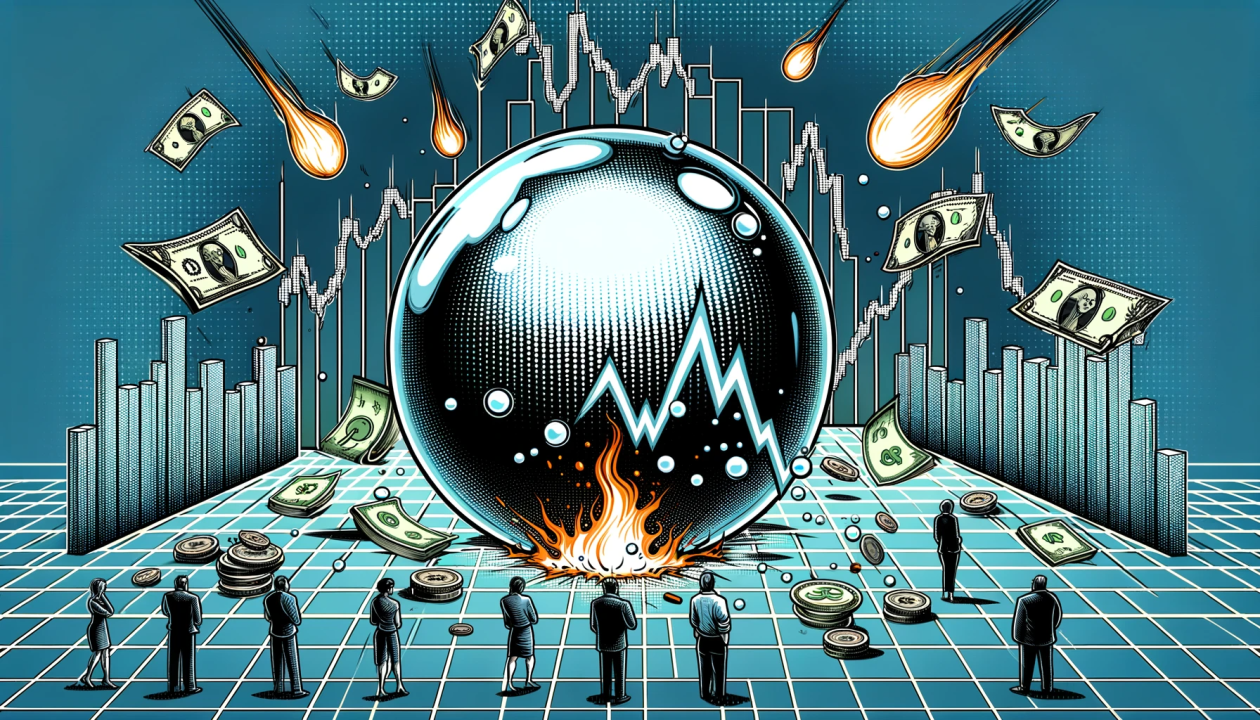
The Dotcom Bubble: A Deep Dive into the Rise and Fall of Internet Stocks
The late 1990s and early 2000s witnessed one of the most exhilarating and catastrophic financial phenomena in history: the Dotcom Bubble. Also known as the Internet Bubble or Information Technology Bubble, this period was marked by the unprecedented rise and subsequent crash of internet-based tech companies. This blog delves into the details of the dotcom bubble, tracing its origins, its meteoric rise, and its dramatic burst, while also examining the long-term impacts on the technology sector.
The Rise of the Dotcom Bubble
Origins of the Bubble
The dotcom bubble began with the rapid expansion of the internet and the proliferation of online businesses. The World Wide Web’s growth during the mid-1990s sparked immense excitement, as investors and entrepreneurs saw limitless opportunities in the digital realm. The initial public offering (IPO) of Netscape on August 9, 1995, was a key event that ignited this frenzy. Netscape, a web browser developer, went public at $28 per share, but the stock soared to $58.25 on the first day, setting a precedent for future internet IPOs.
Speculative Investment and Market Growth
![]()
Netscape’s success set off a wave of IPOs for internet startups, with investors pouring capital into tech companies without considering traditional financial metrics like price-to-earnings (P/E) ratios or debt-to-equity (D/E) ratios. The NASDAQ Composite Index, heavily weighted with tech stocks, skyrocketed from 751 in January 1995 to a peak of 5,048.62 on March 10, 2000. By 1999, 39% of all venture-capital investments were directed toward internet companies.
The Mania of the Bubble
The dotcom bubble was fueled by excessive speculation and optimism. The P/E ratio of the NASDAQ Composite Index surpassed 90 in 1999, and companies going public often had astronomical price-to-sales (P/S) ratios. Many startups operated at substantial losses, spending heavily on marketing and brand awareness in the hope of future profits. Lavish spending on employee perks and “dotcom parties” became a symbol of the irrational exuberance characterizing the era.
The Burst of the Bubble
The Peak and the Fall
The bubble reached its zenith on March 10, 2000, with the NASDAQ Composite Index peaking at 5,048.62. However, the market sentiment began to shift as it became apparent that many tech startups were struggling to achieve profitability. The onset of a global sell-off, coupled with the news of Japan entering a recession, triggered a steep decline in the NASDAQ. The index fell by more than 25% during the week ending April 14, 2000, surpassing previous records for market declines.
The Impact of Monetary Policy
The Federal Reserve’s actions played a crucial role in both inflating and deflating the bubble. During the mid-1990s, low interest rates and favorable capital-gains tax rates encouraged aggressive investment in tech startups. However, the Fed’s decision to increase interest rates starting in early 2000 exacerbated the bubble’s burst, leading to tighter financial conditions and reducing the appeal of speculative investments.
The Aftermath and Market Correction
![]()
The NASDAQ Composite Index lost 40% of its value in 2000, and the situation worsened with the attacks on September 11, 2001, and subsequent corporate scandals involving Enron, WorldCom, and Adelphia Communications. By the end of 2002, the bubble had burst, wiping out over $5 trillion in market value. Many dotcom companies, such as Pets.com, 360networks, and eToys.com, declared bankruptcy, while others like Amazon, eBay, and Cisco managed to survive and thrive post-bubble.
Lessons and Legacy
Survivors and Thrivers
While the bubble’s burst led to the collapse of many internet startups, it also highlighted the potential for long-term success in the tech industry. Companies like Amazon, which saw its share price plummet from around $100 to $7 before rebounding, emerged from the period stronger and more resilient. Similarly, eBay, Salesforce, and Priceline.com navigated the turbulence and grew into major players in the digital economy.
Impact on Investment and Technology
The dotcom bubble underscored the dangers of speculative investing and the importance of solid business fundamentals. It led to a more cautious approach in venture capital and public offerings, with a greater emphasis on profitability and sustainable growth. The lessons learned from the bubble have shaped investment strategies and regulatory practices in the tech sector, contributing to the more stable and mature technology landscape we see today.
The dotcom bubble was a period of extraordinary highs and dramatic lows, driven by the excitement surrounding the internet’s potential. While the bubble’s burst led to significant financial losses and market corrections, it also set the stage for the development of a robust and innovative tech industry. By understanding the rise and fall of the dotcom bubble, investors and entrepreneurs can gain valuable insights into managing risk and navigating the ever-evolving world of technology.




